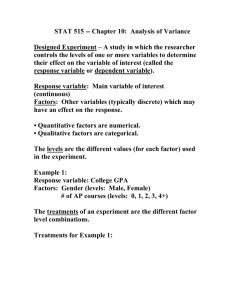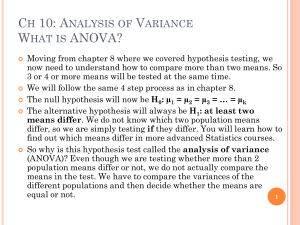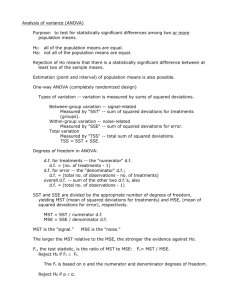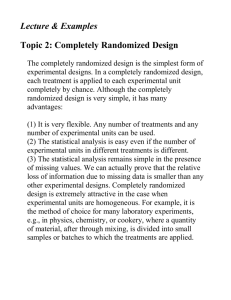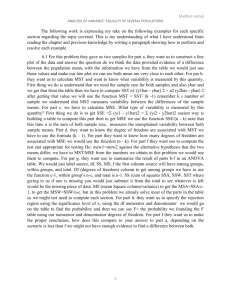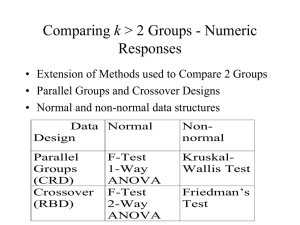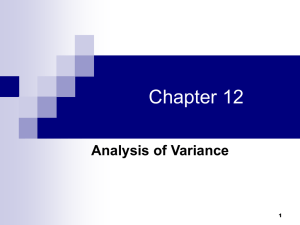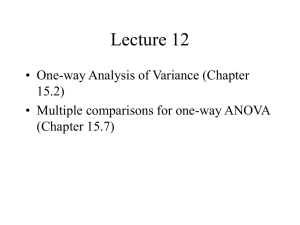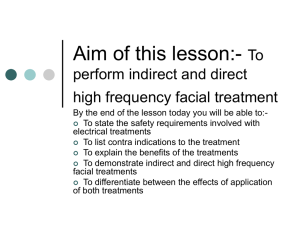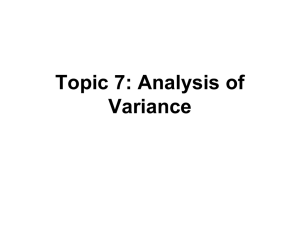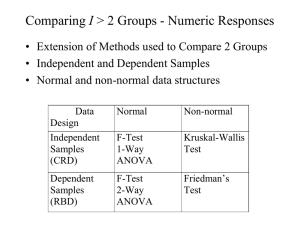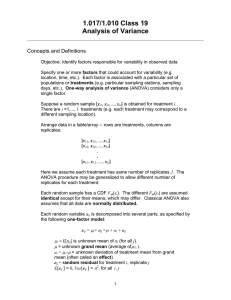Anova terminology
advertisement
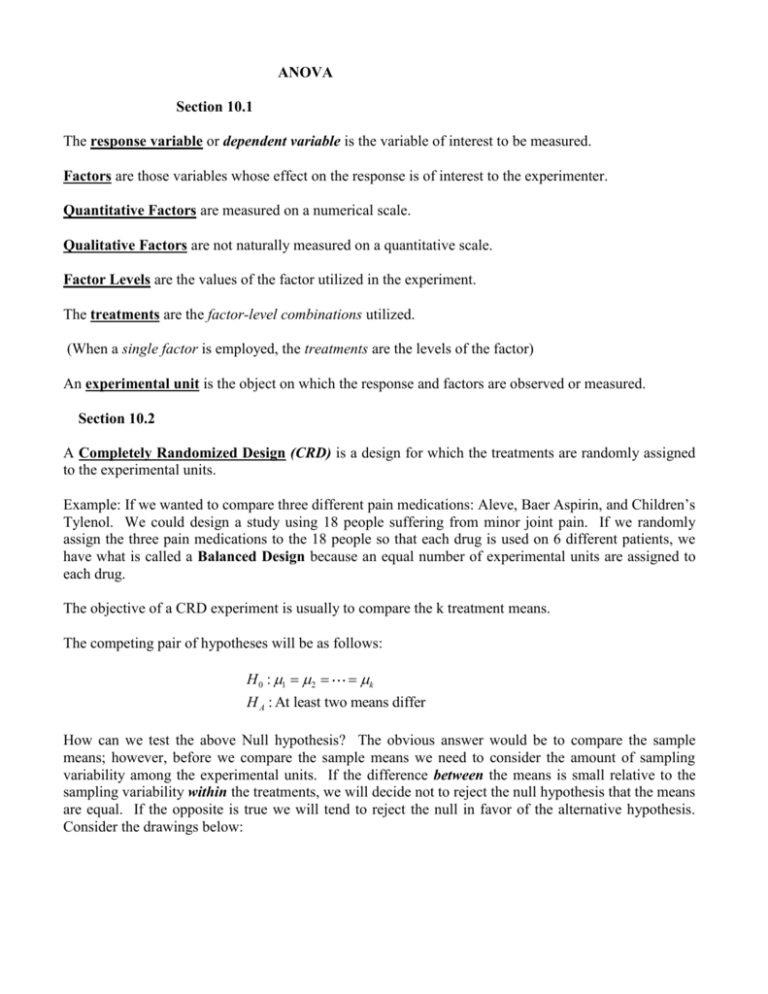
ANOVA Section 10.1 The response variable or dependent variable is the variable of interest to be measured. Factors are those variables whose effect on the response is of interest to the experimenter. Quantitative Factors are measured on a numerical scale. Qualitative Factors are not naturally measured on a quantitative scale. Factor Levels are the values of the factor utilized in the experiment. The treatments are the factor-level combinations utilized. (When a single factor is employed, the treatments are the levels of the factor) An experimental unit is the object on which the response and factors are observed or measured. Section 10.2 A Completely Randomized Design (CRD) is a design for which the treatments are randomly assigned to the experimental units. Example: If we wanted to compare three different pain medications: Aleve, Baer Aspirin, and Children’s Tylenol. We could design a study using 18 people suffering from minor joint pain. If we randomly assign the three pain medications to the 18 people so that each drug is used on 6 different patients, we have what is called a Balanced Design because an equal number of experimental units are assigned to each drug. The objective of a CRD experiment is usually to compare the k treatment means. The competing pair of hypotheses will be as follows: H 0 : 1 2 k H A : At least two means differ How can we test the above Null hypothesis? The obvious answer would be to compare the sample means; however, before we compare the sample means we need to consider the amount of sampling variability among the experimental units. If the difference between the means is small relative to the sampling variability within the treatments, we will decide not to reject the null hypothesis that the means are equal. If the opposite is true we will tend to reject the null in favor of the alternative hypothesis. Consider the drawings below: Mean B Mean A Mean A Mean B It is easy to see in the second picture that Treatment B has a larger mean than Treatment A, but in the first picture we are not sure if we have observed just a chance occurrence since the sampling variability is so large within treatments. To conduct our statistical test to compare the means we will then compare the variation between treatment means to the variation within the treatment means. If the variation between is much larger than the variation within treatments, we will be able to support the alternative hypothesis. The variation between is measured by the Sum of Squares for Treatments (SST): k SST= n i X i X 2 i=1 The variation within is measured by the Sum of Squares for Error (SSE): n1 SSE x1 j X 1 j 1 x 2 n2 j 1 2j X2 2 nk ... xkj X k j 1 2 From these we will be able to get the Mean Square for Treatments (MST) and the Mean Square for Error (MSE): SST SSE MST MSE & k 1 nk It is the two above quantities that we will compare, but as usual we will compare them in the form of a test statistic. The test statistic we will create in this case has an F distribution with (k – 1, n – k)* degrees of freedom: MST F= MSE (The F-tables are found on pages 899 – 906) *Recall, n = number of experimental units total and k = number of treatments. We can interpret the F ratio as follows: If F > 1, the treatment effect is greater than the variation within treatments. If F 1 , the treatment effect is not significant. You might recall that in section 9.2, we conducted a t-test to compare two population means, and we pooled their sample variances as an estimate of their (assumed equal) population variances. That t-test and the above F-test we have described are equivalent and will produce the same results when there are just two means being compared. Let’s list what we have discussed so far and talk about the assumptions of this F test: F-test for a CRD experiment SST H 0 : 1 2 k Hypotheses: Statistic: F k 1 Test Rejection Region: SSE H A : At least two means differ nk F F It is common to put all of these calculations into an easy to read and use table called the ANOVA table: Source Treatments Error Total df K–1 N–k N-1 SS SST SSE SS(total) MS F MST = SST/k-1 MST/MSE MSE = SSE/n-k Note that we have a quantity in this table called Sum of Squares Total. There is a very useful relationship that we will need to understand in this chapter: SS(total) = SST + SSE Total Sum of Squares Treatment Sum of Squares Error Sum of Squares
